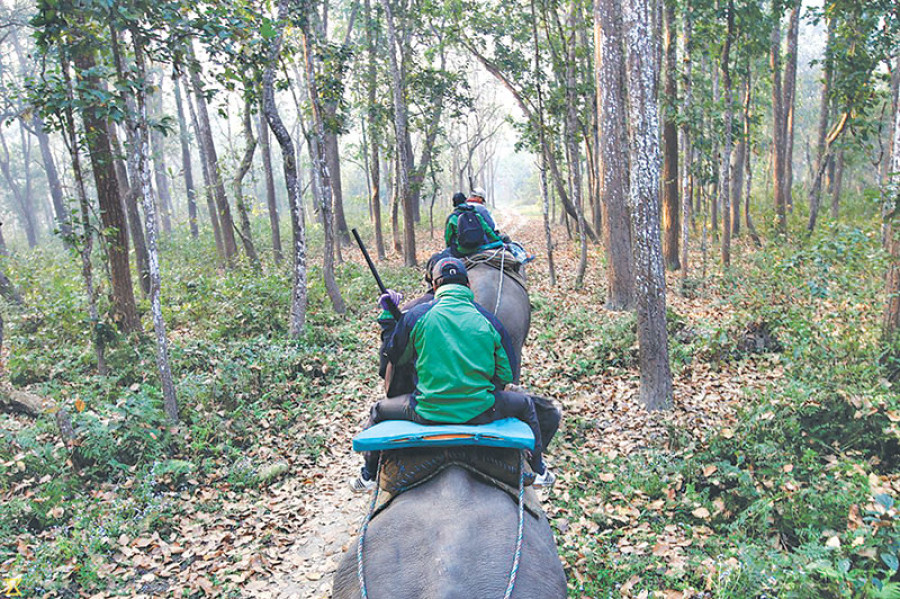Opinion
The pitfalls of imported notions
Imported models of conservation have failed to address ground realities in Nepal
Shradha Ghale
Like much else that goes on in Nepal, environmental decision-making has long been shaped by foreign aid. The first protected areas in Nepal were created in the 1970s when the American environmental movement was gaining global prominence. International organisations were keen to fund environmental projects in Nepal and the government keen to receive them. A number of Western ‘experts’ made cataclysmic predictions of ecological tragedies and recommended interventions that the government eagerly welcomed. Many of their claims, though refuted by later scholars, continue to influence Nepal’s conservation discourse.
Discredited notions
A well-known example is the so-called ‘theory of Himalayan degradation’ advanced by the American reporter Eric Eckholm. The theory, which gained widespread currency in the seventies, blamed population growth and the practices of subsistence farmers for the looming environmental crisis. As Julie Gutham writes in a 1997 article, “The theory also justified the establishment of national parks and other protected areas and in an ironic way contributed to the expansion of Nepal’s tourism sector.”
In the 1980s, new studies revealed that many of Eckholm’s claims were based on insufficient evidence. The theory increasingly came under attack on empirical and theoretical grounds. Yet it continued to enjoy legitimacy among multilateral institutions and international conservation organisations in Nepal.
In fact, the largely discredited theory holds sway over mainstream conservation to this day. Time and again we are told that the primary culprits of environmental degradation are the rural poor and their ‘unsustainable’ ways of life—their dependence on forest resources, swidden agriculture and overgrazing. The bigger culprits—uneven and aggressive development, the rent-seeking mentality of the political class, and overconsumption of the rich—rarely get a mention.
Imported models
Imported ideas are by no means inherently flawed. The American environmental movement was sparked by brave and brilliant people like Rachel Carson, who took on some of the world’s most powerful industries in her iconic book Silent Spring. Humans are being allowed to destroy nature, she wrote, because we live in “an era dominated by industry, in which the right to make a dollar at whatever cost is seldom challenged.” Carson’s writing played a huge role in awakening environmental consciousness across the globe.
However, the American concept of national parks, which focused on strict nature protection, was removed from the reality of agrarian societies in the Third World. According to the US National Park Service, the concept “stemmed from the desire to protect special places for visitors’ present and future enjoyment.” This was the concept that guided the 1973 National Parks and Wildlife Conservation Act of Nepal. The Act was a direct outcome of an eponymous project supported by the UNDP and FAO. Many national parks and reserves, including the first park in Chitwan, were surveyed under that project. By banning human settlement and use of natural resources, the Act spelled disaster for large numbers of historically marginalised people.
In Bardiya, for instance, the first person to suggest creating a national park was Melvin Bolton, a British wildlife ecologist from FAO. In 1976 he prepared a management plan in which he recommended evicting the villagers of Chisapani to protect wildlife. He also recommended the government to curtail local people’s access to thatch grass; ban swidden agriculture (a traditional practice among the indigenous Tharu population); prohibit fishing near the park; and deploy more guards to protect the gharial, because “they are eagerly collected and eaten by Tharu people year after year.”
More parks and reserves
Protected area coverage in Nepal increased massively in the following decades—by 194 percent during 1981-1990 and 98 percent during 1991-1998. The process, which was carried out under the aegis of international organisations, involved large-scale dispossession of some of the most vulnerable populations. The forests that had served as private hunting grounds of kings and despots now became the preserve of the government, army and politicians. They became a source of profit for tourism entrepreneurs and sanctuaries for foreign tourists and affluent Nepalis.
The area that is now Banke National Park, was declared a ‘Gift to the Earth’ by WWF back in 1998. In July 2010 the area was declared a national park to expand the tiger habitat. The decision, which sparked fierce protests by locals, came in the wake of a high-level Kathmandu workshop on tigers. The event was part of the Global Tiger Initiative supported by big institutions like the World Bank and the Global Environment Facility. A few months after Banke National Park was established, the Nepal government participated in the Global Tiger Summit in Russia, where thirteen countries made a formal commitment to double the tiger population by 2022. To that end, conservation organisations in Nepal have demarcated vast stretches of forested land as ‘wildlife corridors’.
Plenty of studies have shown how mainstream conservation has succumbed to the triumph of neoliberal capitalism. Conservation areas across the globe have turned into sites where nature is fenced off from the poor and commercialised for the benefit of the rich. In Nepal transnational organisations are now promoting market-based approaches such as ecotourism and carbon sequestration. In the words of Liza Grandia, these neoliberal initiatives will have you believe that one can “eat one’s conservation cake and have development dessert too,” a promise that remains dismally unfulfilled in Nepal and elsewhere.
White man’s “ecological burden”In his important body of work on the environment, the Indian historian Ramachandra Guha offers a sustained critique of what he calls the “ecologically updated version of the White Man’s Burden.” In a 1989 article, he criticises India’s ‘Project Tiger’, an early outcome of WWF’s global campaign for tiger conservation, for prioritising the tiger over the needs of poor peasants. Guha writes that the idea of creating parks for ‘charismatic megafauna’ such as the tiger, rhinoceros and elephant initially came from two social groups: “first, a class of ex-hunters turned conservationists belonging mostly to the declining Indian feudal elite and second, representatives of international agencies [such as the WWF and IUCN], seeking to transplant the American system of national parks onto Indian soil.”
As Guha points out, the “wholesale transfer” of a movement rooted in the American context has caused great suffering to people in other parts of the globe. He contrasts the top-down model with grassroots environmental movements in India, which “seek to wrest control of nature away from the state and the industrial sector and place it in the hands of rural communities who live within that environment but are increasingly denied access to it.” For these villagers, protecting the environment is “a question of sheer survival, not of enhancing the quality of life.”
Guha’s critique has much resonance for Nepal, where environmental agendas have long been shaped by donors and international organisations. Yet unlike their ‘development’ counterparts, who have faced robust criticism over the last two decades, conservation organisations remain largely insulated from public scrutiny and have appropriated the moral high ground.




 20.12°C Kathmandu
20.12°C Kathmandu










